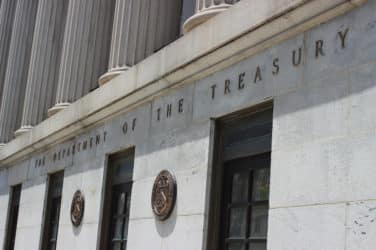
Hirander Misra, chief executive and co-founder of GMEX Exchange, said the group is investigating the launch of an interest rate swap constant maturity future in US dollars after the product was approved by US regulators last week.
On November 18 the London-based exchange group said in a statement that the Commodity Futures Trading Commission has authorised the offer of interest rate swap constant maturity futures to US-based firms.
Misra told Markets Media: “CFTC approval means we can start marketing in the US and we have embarked on that. We will work with the clearing members we have on board with Eurex in Chicago and we will build up a sales resource in our own right.”
Bank of America Merrill Lynch and Société Générale Newedge are existing GMEX clearing members with US coverage. Misra added that following the CFTC approval GMEX’s interest rate swap constant maturity futures will become accessible to US futures firms and buyside who do not have a European presence.
In London GMEX’s electronic platform went live on 7 August for euro-denominated IRS CMF. Trade confirmation and clearing is through Eurex, the Deutsche Börse subsidiary. The German exchange owns a minority stake in GMEX alongside Société Générale Corporate & Investment Banking and the investment vehicle of Forum Trading Solutions Limited.
“We have soft-launched in Europe as the central clearing rules come into effect between April and October next year for category two participants and between now and April we will be adding more buyside and market makers,” added Misra.
In August the European Commission adopted the regulatory technical standards on the clearing obligation for certain over-the-counter interest rate swaps. The introduction of mandatory clearing may begin for clearing members in April 2016 with buyside firms having to comply in the second phase in October 2016.
Misra said: “Aberdeen Asset Management and Old Mutual are due to join in the next four to six weeks, and Société Générale investment bank and some electronic market makers are in the pipeline.”
GMEX products will be offered to US clients through Eurex’s Trade Entry Service or via direct market access with clearing through Eurex Clearing.
Eurex said in a statement that it had started offering its Trade Entry Services for customers based in the US on 16 November 2015. The statement said: “Eurex’s TES enable trading participants to enter off-book transactions into the Eurex system, which allows them to benefit from the flexibility of customized trading and the advantages of standardized clearing and settlement through Eurex.”
GMEX is initially launching in the US with euro-denominated contracts. “We will open up the euro market further in the US but also get a big uplift when the US dollar product is launched,” said Misra.
He explained that US-based firms typically trade 30% of their interest rate swaps in euros, 60% in US dollars and the remaining 10% in other currencies
“The key question for us when launching another currency is to be able to build indices from the underlying data and we will have that in US dollars in the first quarter of next year,” Misra added.
Another key consideration is clearing. Eurex clears euro-denominated IRS CMF in European hours but will be able to clear a US dollar-denominated contract in US hours.
The Australian market is also introducing mandatory clearing and this could apply to interest rate swaps from April 2016. If GMEX futures are eventually launched in Australian dollars, they could be cleared in an Asian timezone and IRS CMF would be available around the clock.
Constant maturity futures contracts do not have quarterly expiry dates and are designed to provide better hedging than the futures on swaps which have been launched by rival exchanges. GMEX’s margin is also based on a two-day value-at-risk rather than up to five days in the case of existing standard swaps and swap futures, and require lower margins.
“The margin effect is very important and if multiple currencies are cleared in the same clearing house then it should ultimately be feasible to net margins with other fixed income exchange-traded derivatives and over-the-counter interest rate swaps,” Misra added.




